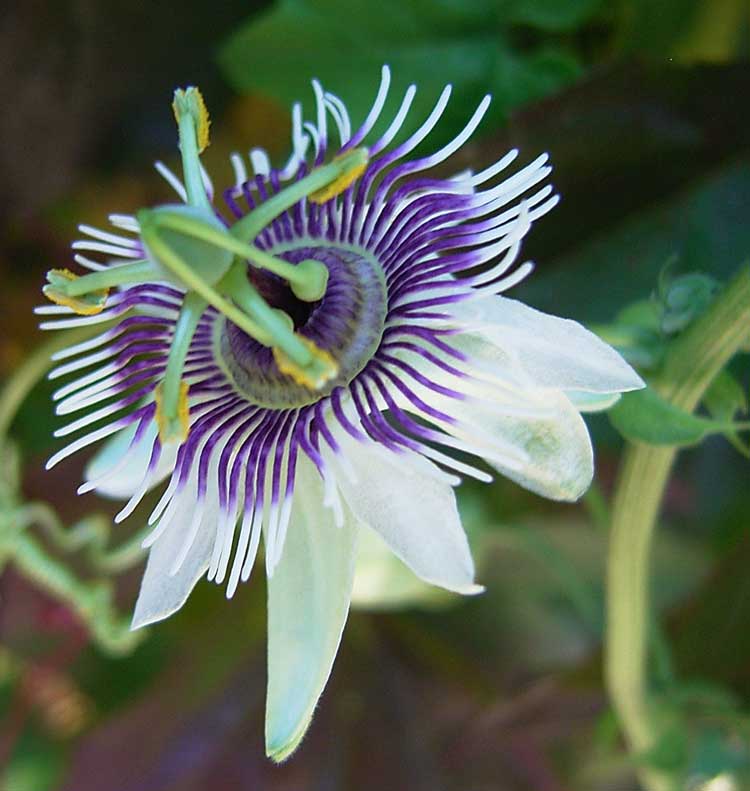
Passiflora morifolia (*)
Classification System: APG IV
Superregnum: Eukaryota
Regnum: Plantae
Cladus: Angiosperms
Cladus: Eudicots
Cladus: Core eudicots
Cladus: Rosids
Cladus: Eurosids I
Ordo: Malpighiales
Familia: Passifloraceae
Genus: Passiflora
Subgenus: P. subg. Decaloba
Supersectio: P. supersect. Bryonioides
Species: Passiflora morifolia
Name
Passiflora morifolia Mast., 1872.
Synonyms
Heterotypic
Passiflora erosa Rusby, Bull. New York Bot. Gard. 4: 363. 1907.
Passiflora heydei Killip, . Wash. Acad. Sci. 12: 258. 1922.
Passiflora warmingii Mast., Fl. Bras. (Martius) 13(1): 554. 1872.
Passiflora warmingii subsp. chacoensis R.E. Fr., Ark. Bot. 8(8): 4 (t. 1). 1909.
Passiflora weberiana Mast., frev. Hort. 57: 114, 113. 1885.
References
Masters, M.T. 1872. Fl. Bras. 13(1): 555.
Tropicos.org 2009. Passiflora morifolia. Missouri Botanical Garden. Published on the internet. Accessed: 16 Feb 2009.
Vernacular names
Deutsch: Maulbeerblättrige Passionsblume
English: Blue sweet calabash
Passiflora morifolia, the blue sweet calabash or woodland passionflower, is a white and purple flowered passion flower with blue or purple fruit. The very fast-growing vine that can grow a few dozen feet in a season. Flowers are ornate, white, blue and purple fruits follow, which ripen to blue or purple. The orange pulp might be edible. The hardiness of P. morifolia is to at least 32 °F, some sources claim as low as 15-20 °F. It grows well in full sun or filtered sun. The vine is fast growing and once established it is quite vigorous. Its propagation is by seed or by cuttings. It is grown as an ornamental. It is not cultivated for its fruit. It is native to the parts of Central and South America.
References
Retrieved from "http://en.wikipedia.org/"
All text is available under the terms of the GNU Free Documentation License

